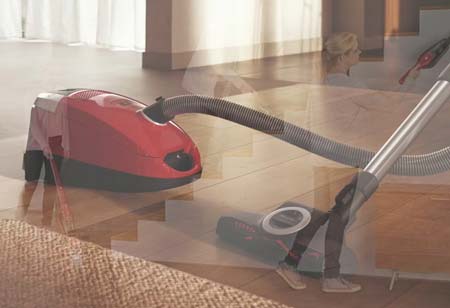Thank you for Subscribing to Construction Business Review Weekly Brief

Cleaning Industrial Vacuums: Innovative Approaches
The most notable advancement in industrial vacuum cleaning was the seamless integration of automation and robotics.
Industrial vacuum cleaning has undergone significant innovations in recent years, transforming how industries approach cleanliness, safety, and efficiency. Technological breakthroughs have driven the advancements, increased awareness of environmental concerns, and the growing need for more sophisticated cleaning solutions. With technological advancements and groundbreaking innovations, reflecting on the progress made in various industries is crucial. The reflection delves into the innovations and insights that shaped industrial vacuum cleaning throughout the past year.
Modern industrial vacuum cleaners have sensors and intelligent algorithms to negotiate complex environments in which they must operate autonomously. It improves the efficiency of cleaning processes and reduces hazardous exposure to workers. Automated vacuum systems can be programmed to follow predefined paths, ensuring thorough cleaning of large industrial spaces without human intervention. In industrial vacuum cleaners, IoT has brought a whole new era of connectivity. These smart devices can now be integrated into more extensive industrial networks, allowing real-time monitoring and data analysis. The advancements improve the efficiency and safety of cleaning processes and contribute to the overall sustainability of industrial operations.
IoT-enabled vacuum cleaners provide valuable insights into cleaning patterns, equipment performance, and maintenance requirements. The data-driven approach enables predictive maintenance, minimizing downtime and optimizing the overall efficiency of industrial cleaning operations. High-efficiency particulate Air (HEPA) filtration technology has become a standard feature in modern industrial vacuum cleaners. These advanced filters can capture tiny particles, including dust, allergens, and microorganisms. HEPA filters contribute to a cleaner working environment and are crucial in maintaining air quality, especially in industries where airborne contaminants pose health risks.
Adopting HEPA filtration has become vital to compliance with stringent safety and health regulations. Industrial vacuum cleaner manufacturers have increasingly focused on developing eco-friendly designs. It includes using energy-efficient motors and recyclable materials and implementing systems that minimize waste generation. Green cleaning solutions align with corporate environmental goals and contribute to a positive public image for businesses committed to reducing their ecological footprint. Advancements in design have led to the development of more compact and maneuverable industrial vacuum cleaners. Further technological advancements will likely lead to other breakthroughs in industrial vacuum cleaning, shaping the future of industrial cleanliness.
The innovations are particularly beneficial in industries where limited space and accessibility are challenging. Compact designs, often accompanied by enhanced maneuverability features, allow vacuum cleaners to reach confined spaces and easily navigate obstacles. This adaptability improves the overall effectiveness of cleaning processes in diverse industrial settings. Specific industries deal with hazardous materials that require specialized vacuum cleaning solutions. Innovations in this area include vacuum cleaners explicitly designed to safely remove and contain toxic substances. Industrial vacuum cleaning has seen remarkable innovations, from integrating automation and robotics to implementing eco-friendly designs.
The industrial vacuum systems are equipped with sealed containers, ensuring that hazardous materials are securely collected and disposed of without exposing workers to potential health risks. Developing specialized vacuum systems has enhanced workplace safety across various sectors. The latest industrial vacuum cleaners are not limited to collecting dust and debris. Multi-functional cleaning systems are equipped with attachments and accessories that allow them to perform various tasks, such as pressure washing, steam cleaning, and surface polishing. The versatility ensures that industrial spaces can be efficiently cleaned and maintained using a single, integrated system, reducing the need for multiple specialized cleaning devices.








